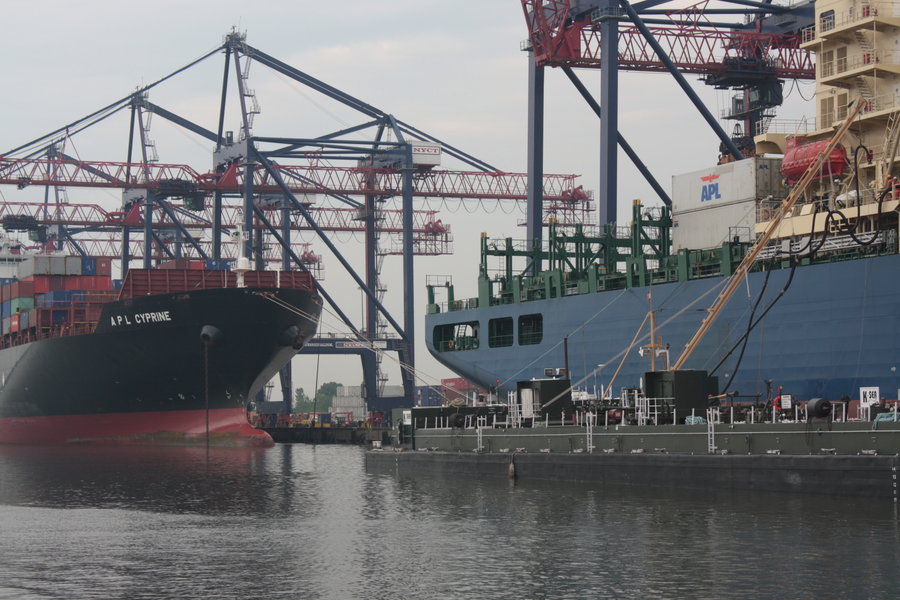JERSEY CITY — The Port Authority announced this week that cargo volumes in the Port of New York and New Jersey are being handled at a record pace for 2015 during the first six months of this year – 13.4 percent higher than the same period in 2014 when the previous record was established.
The record volumes have allowed the port to maintain its position as the busiest on the East Coast.
Cargo handled by ExpressRail, the Port Authority’s ship-to-rail system serving New York and New Jersey marine terminals, also continued to increase as a percentage of total port cargo compared to trucks. During the first six months of 2015, ExpressRail handled 257,103 containers, up 15.1 percent from the previous record year of 2014, when 223,374 containers were handled.
The agency’s investment of more than $600 million in ExpressRail – and its plans to build a new ExpressRail facility in Greenville Yard in Jersey City – has been critical to addressing the need for on-dock rail to improve port efficiency, competitiveness and reduce emissions. Port road, rail and security projects are now funded by portwide Cargo Facility Charges.
Record cargo volumes are partly dues to strategic initiatives including the 50-foot channel project, investments in our port’s environmentally friendly rail network, upgraded port roads, and our award-winning Clean Air port strategy,” said Port Authority Executive Director Pat Foye.
“(Retiring Port Director Rick Larrabee) leaves the Port of New York and New Jersey with a strong outlook for continued growth in jobs and economic activity as the pre-eminent East Coast port, and our project to raise the Bayonne Bridge underway,” Foye said. “This week we welcome Molly Campbell as our new port director who I am confident will build on Rick’s accomplishments in the years to come.”
We’re reaping the benefits of a strong regional economy and labor uncertainty on the West Coast,” said Port Commerce Director Richard Larrabee. “Our challenge now is to find ways to more efficiently handle the record volumes we have seen all year, and we’ve been working collaboratively will all port stakeholders to meet this goal. At the same time, we are continuing our aggressive environmental initiatives to ensure that more cargo does not result in more pollution for those who work or live around our port facilities.”
Our Digital Archive from 2000 – 2016
